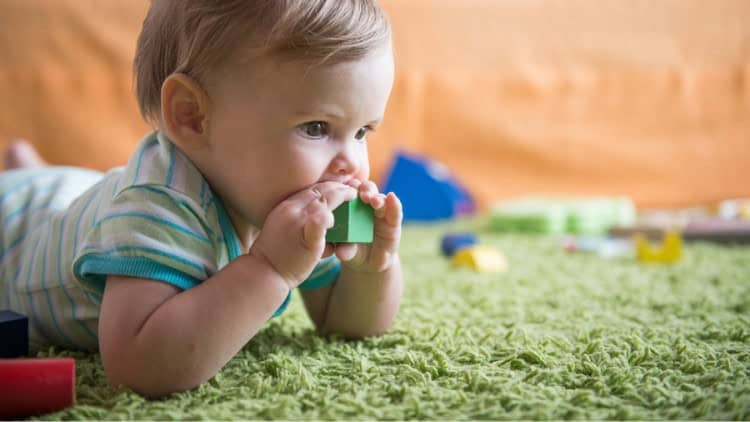Rejecting bans on particularly hazardous chemicals, EU ministers have sought to dilute revised legislation on toy safety.

Toys are among the top products in the European Union reported for health-and-safety risks. They account for 23 per cent of all alerts for dangerous consumer products in the EU’s rapid-alert system. They can contain chemicals such as per- and polyfluorinated alkyl substances or PFAS (used in textiles and foams) and bisphenols (used in plastic).
The position recently adopted by the Council of the EU on revision of the legislation on toy safety is thus concerning, notably in failing to support a bans on PFAS and bisphenols. The proposal adopted by the European Parliament in March was more protective of children’s health.
‘Forever chemicals’
PFAS, labelled ‘forever chemicals’ since they can take more than 1,000 years (if ever) to break down, are a group of more than 10,000 chemicals used in industrial processes and for their stain-repellent and waterproofing qualities. They can affect children as they develop and have been proven to be dangerous to everyone’s health. Scientific evidence (1,2,3,4,5,6) has linked exposure to PFAS to serious health impacts, such as different types of cancer, thyroid disease, immune dysfunction and hormone disruption.
PFAS are known to pass through the placenta and via breastfeeding. In children, exposure has been linked to immune effects, poorer cardiovascular and metabolic functionality, autoimmune disorders, childhood cancers (such as leukemia), reduced vaccine response, autism and attention-deficit/hyperactivity disorder.
Several EU member states last year proposed a union-wide ban on PFAS, which the European Chemicals Agency is assessing. But this is expected to take effect only from 2026 at the earliest. PFAS and bisphenols are classified as substances of very high concern (SVHC) under the REACH chemicals legislation. Given the serious concerns for children’s health, this should be reason enough to ban them in toys with the revised version of the toy-safety legislation.
Become a Social Europe Member
Support independent publishing and progressive ideas by becoming a Social Europe member for less than 5 Euro per month. Your support makes all the difference!
Serious concerns
Bisphenol A (BPA) and other bisphenols in consumer products, including toys, have been a cause of serious concerns for years. BPA is listed as an SVHC under REACH for its properties—toxic for reproduction and an endocrine disruptor. BPA can contribute to breast cancer, neurobehavioural disorders and diabetes.
The EU has set a limit (0.04 milligrammes per litre) to how much BPA is allowed to leach from toys for children up to the age of three and in any toys intended to be placed in a child’s mouth. Based on evidence that BPA affects the immune system, however, the European Food Safety Authority recently lowered markedly the threshold for BPA considered safe for ingestion via migration from food contact materials—to 0.2 nanogrammes per kilogramme per day, more than 20,000 times below the previous limit. Conclusions should be drawn from this, with no further delay, to protect children’s health from any exposure to BPA and other bisphenols in toys.
As the last straw, the council envisages granting a 60-month transition period before the revised legislation is applied by member states. It is unacceptable to consider subjecting children and their families and carers to at least five years of additional hazardous exposure.
Preventive measures
All these shortcomings are in contradiction with the commitment of the EU Chemicals Strategy for Sustainability to an approach across legislation of taking the most preventive measures to avoid exposure to dangerous chemicals. All harmful chemicals shouldbe phased out from consumer products and therefore banned from toys without delay.
After this backward step from the council, it is crucial after the elections next month that the newly installed European Parliament safeguards the health of children. It needs to ensure a health-protective conclusion to the interinstitutional negotiations on the toy-safety legislation revision—and its speedy implementation.

